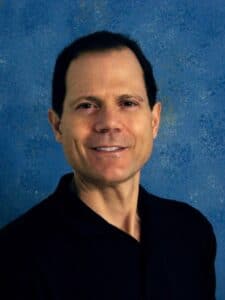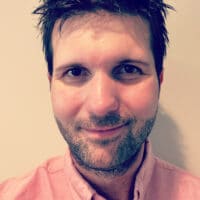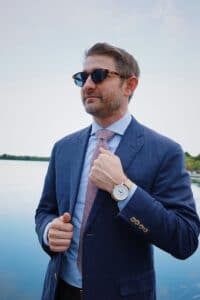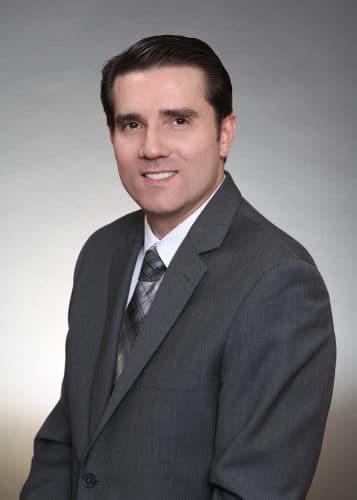
Virtual Events

Fred Deane
This year has provided some very unusual disruptions to our professional lives. As an industry, we have adapted quite nimbly to the new set of circumstances and requirements that have beset the medium at large. Stay at home mandates for programmers, their staffs and artists alike, have altered an entire way business is conducted these days.
This report focuses on station events and how Reality has turned Virtual, where we find several stations optimizing their new found initiatives in very creative and resourceful ways.
As programmers planned their promotion calendars for 2020 in Q4 of 2019, there was no accounting for a nationwide pandemic that would stop our businesses and local economies in their tracks. As the year progressed, it was becoming increasingly more certain that 2020 would be drastically different than any other year any of us had ever previously experienced.
Planned events became a wildcard for many, while others decided to play the Virtual Reality game and produce big station events despite the national societal restrictions.

Jonathan Shuford
Jonathan Shuford, PD of 107.5 The River in Nashville has successfully been producing his River On The Rooftop series on Broadway in the heart of Music City for four years…why stop now? Shuford converted his benchmark event to River Under Your Rooftop and presented a virtual affair including performances by Lewis Capaldi, Finneas, Tones & I, and JoJo among others.
“We wanted to re-create the ‘live’ artist experience as much as we could. We housed the performances on Instagram live, with virtual meet & greets through the Looped app (which I highly recommend). Most of the artists loved the live element, and we also had a couple of exceptions where the segments were pre-recorded sets. For those we used a couple of online plugins to still go live on Instagram with a downloaded hi-res video. Once we got the production figured out, it was really just about promotion and marketing, which thankfully is what we’re really good at. We were able to leverage those virtual meet & greet experiences as unique listening opportunities while also using them to naturally promote tune-in for the event both via our on-air and online platforms.
We deliberated on one important issue which was to make a decision as to what was more important for us: access and reach versus quality. It’s really hard to achieve both in a virtual setting. You sacrifice some quality and set yourself up for some technical difficulties doing truly live content on platforms like Instagram, Facebook or Zoom. But those platforms are all really accessible and user-friendly, not to mention afford you the opportunity to tap into the artists’ individual fanbases to increase reach. On the other hand, getting polished pre-recorded performances makes the look and feel of the event better, but depending on the execution, you run the risk of limiting audience reach. We saw that firsthand, as the truly live performances from our event brought in 3-10x the reach of the pre-recorded ones. We presented everything on IG Live, and we saved all of the performances to IGTV immediately following each one.
One thing we learned is that there really are no best practices to adopt regarding these events. There definitely is a hunger for live music, and we can tap into that, but everyone’s situation will vary with mutually exclusive factors that need to be addressed as you proceed through the process. There are a lot of smart programmers in this column, and the way we did it in Nashville isn’t any better or worse than what any of them accomplished. We’re redefining the parameters with each different event. It’s a great learning experience and certainly these initiatives can (and probably will) live beyond the pandemic. We just need to realize that it’s an evolving equation.
Regarding the sustainability of these events going forward, on a smaller scale, there’s definitely some viability. This pandemic could, and to an extent already has, redefine the old “artist promo tour” with twenty listeners in a lounge. There are enough tech tools at our disposal now that we can create a great listener experience without anyone leaving their homes, including the artists. It’s more cost-effective for the labels, less time-consuming for the station, and more convenient for the listener.
On a larger scale, I’m not sure. River Under Your Rooftop was great because it’s free and easy, but there are questions still remaining as to the viability of any kind of a paid/ticketed virtual event. Can you get 20,000 people to buy a “ticket” to watch a concert or event on a screen, and if so, what price would they be willing to pay? Or are we better off thinking smaller? There are a LOT of challenges that will only be compounded as this thing drags on, but necessity breeds creativity and it’s fun to watch what other brands across the country are doing and learn together what works and what doesn’t. We’re all on an equal playing field trying to reach the end zone together.

Brian Mack
WXXL/Orlando PD Brian Mack decided that virtual was the way to go with the station’s Silver Anniversary of its big summer rite of passage, Red, Hot & Boom. This year’s model presented virtual performances by Noah Cyrus, Public, Surfaces, Shaed and JP Saxe.
“It turned out that this year was RHB‘s 25th Anniversary (also XL’s 30th). We wanted to build something where we could use the partnerships we already had scheduled for our 2020 artist line-up, as well as pay tribute to the many memories people have created every July 3rd for the past 25 years. Without any previous experience in creating a virtual event, we used the iHeart Concert on Fox as a model.
After identifying the videographer/producer we wanted, I assembled imaging pieces as framing elements from one performance to MC and back. The videographer then built graphics and classic RHB photos around those pieces giving us branded transitions. Then it was as easy as filming the talents and hunting down the performances one by one.
We utilized XL personalities to introduce our five performers with a mix of photos from previous years. We filmed the XL talents actually on stage where RHB normally takes place. We even presented fireworks at the end (pulled from a previous RHB stream) to keep the sequencing of the event symmetric with previous years. Complementing our promotion efforts, we had the station mixing in previous RHB artists all weekend long. Once we had the final link, we gave it to our media friends first, and then announced the event the next morning.
The most challenging aspect was mixing new artists among a ‘tribute’ and I feel that’s where we missed the mark. We should have found ways to get a few RHB alumni to supply performances, however, this would have been tough to curate with no budget and our imposed time constraints.
For the presentation and distribution of the event, we uploaded the video to our YouTube page as well as embedded it on our website, with the ancillary goals of driving our YouTube subscriptions up and getting a few unique visitors into the site. The Red, Hot & Boom video has remained there where we keep a lot of our archived in-studio performances and interviews.
As far as lessons learned, we realized that a tribute really needs to be a tribute versus mixing a repurposed goal into an anniversary. We should have focused entirely on YouTube where we had the biggest growth potential. We also should have allowed more time for more media partners to hit ‘launch’ with us. We were very much to the minute every step of the way.
Relative to these types of events being part of the medium’s ongoing game plan, we’re definitely creating more virtual connections and opportunities. However, I’d say we would see more payoff with frequent SMALL encounters (like a virtual meet & greet, private performances, interviews, etc.) as opposed to one LARGE concert like our summer event. If TIKTOK is any indication, our ideal consumers are more interested in short bursts versus long marathons.”

Rich Davis
KDWB/Minneapolis PD Rich Davis decided this was not the year to forgo his annual Star Party. This year’s all-star cast included John Legend, Lewis Capaldi, Meghan Trainor, Lauv, Alec Benjamin, Surfaces and Powfu.
“We hosted our virtual event live on our website on the Thursday night we presented it, and subsequently it was available on multiple platforms. People could view it throughout the entire weekend. We talked about it frequently on-air, mentioning that if you missed it you could still see it thru the weekend on our site, YouTube, or some of our social media channels. By Monday of the following week we had over 15,000 sessions on the program.
I felt it was a great win for us. If we had done the show live it would’ve been at our usual 3,000-seat venue. The virtual event increased our scale allowing us to touch over 5x the number of people. We would typically present this event at our usual venue which makes it an 18-year-old plus event because of the alcohol factor. The benefit this year was that it was accessible to anyone via virtual means. The numbers certainly reflected that factor.
After experiencing it firsthand and for the first time, there were some things I’d do differently. But since it was our initial virtual event of this magnitude, I was very pleased with the overall production and execution values. The ‘tweet-to-screen’ we had going on during the live event was way-cool because it was happening in real time and the kids were able to get on and actually send a tweet that would show up during the show as we were playing it back. This allowed for an engagement component enhancing the virtual experience.
As for the sustainability of these events for the future, I think we have to optimize our promotion and branding efforts in all kinds of circumstances, and when the elements are beyond our control, it’s rewarding to know that we have the technology and proficiency to pull off these kinds of events in very gratifying ways. It’s all about being prepared and nimble enough to call an audible and run the right play at the right time, and utilizing our resources and the available technology to the best of our abilities.”

Justin Chase
Justin Chase, Chief Content Officer for Beasley Media Group has found his company to be highly active participates in virtual initiatives all year long, as you will discover in the many case studies he presents for this article.
“We learned quickly (and early) this year that station events would have to be done very differently during the pandemic. As a company, our stations have executed some really great local virtual promotions and community initiatives, and our corporate team has created several national opportunities to support our stations. We’ve taken full advantage of Zoom technology for countless virtual events during the course of the year.
For all seven of our Country stations, we created an event called The Superstar Mini-Concert Series and we presented them as live on-air concerts. We figured with PUMM levels considerably down, we should do everything we could to put ears on our stations rather than always try to focus on digital-first virtual events. We presented artists like Tim McGraw, Florida-Georgia Line, Lady A, and Thomas Rhett, among others. We actually had so many artists agree to participate, we had to increase the number of weekly concerts from two to four…it was just wild.
We leveraged our digital assets to push people to the radio stations, and we provided virtual artist meet & greets. We had reps from each one of our markets on the Zoom meet & greets and it worked out fantastically.
One of the early events we did back in April was a virtual NFL draft party with WPEN/97.5 The Fanatic in Philly. Personalities hosted it with listeners and we also included various NFL experts and former players giving their opinions. It was extremely well-viewed and was a huge success in a very passionate NFL sports city. There was also a revenue component with sponsors who wanted to be a part of the event.
We’ve done several virtual Happy Hours with our jocks engaging listeners for fun virtual parties. We’ve done virtual charity walks, even dog walks.
We’ve done numerous political Town Hall meetings with community leaders and hosted by some of our Talk station personalities. The biggest being the community event we did in Detroit with our Urban stations (105.9 KISS-FM & 105.1 The Bounce) right after the George Floyd incident in Minneapolis and the subsequent unrest issues. We wanted to create an event where we brought community leaders together and we called it Solutions Not Slogans. It was a major success with listeners and we received tons of positive reaction.
There were some lessons learned via these experiences. Logistics and production of all these events vary in how challenging they can be. It depends on the set-up. The happy hours and dog walks are really easy to execute. Zoom’s technology works really well for those types of events. The bigger events like the NFL draft party and the political Town Hall meetings certainly had to bring engineering together to create a bigger show, similarly to what we’ve done with our live broadcast events of the past.
Generally speaking, we haven’t had any technical issues with any of our efforts that caused us to think twice about frequently executing these events going forward.
We’ve had very receptive client interest in the events. Clients today are looking for creative and unique ideas and some of these virtual events provide excellent opportunities within that realm. They definitely want product placement during the events. They want their brands to be organically included in the broadcast or in the content in some fashion, rather than a ‘sponsored-by’ tagline.”

Dom Theodore
Dom Theodore, CEO of Radio Animal Media Strategies, offers this summary. “For many formats, live events are not only a way to generate NTR, they are an important piece in maintaining relevance. So with a pandemic shutting everything down, stations had to get creative to maintain that connection. Virtual events are a very obvious way to do that. Radio is doing what we’ve always done best, jumping on a trend. Think about how many services have gone virtual, from dating to doctor appointments, so it makes perfect sense for radio to engage audiences in this way. From community service events to artists performing in their living rooms, these events are an opportunity to keep the audience connected to our brands.”

